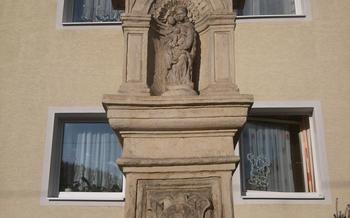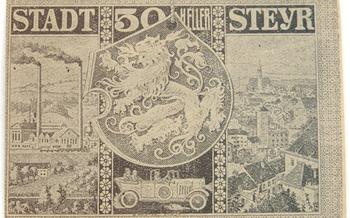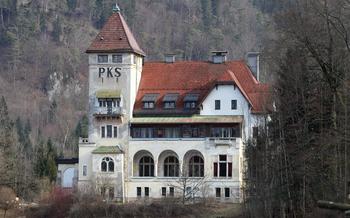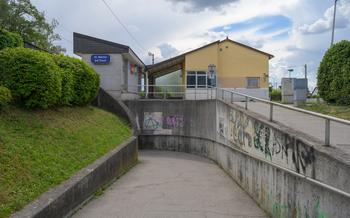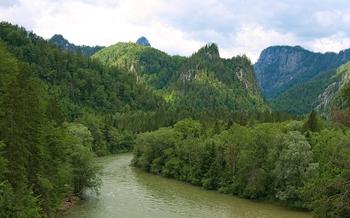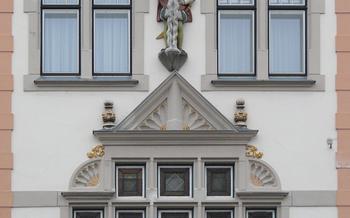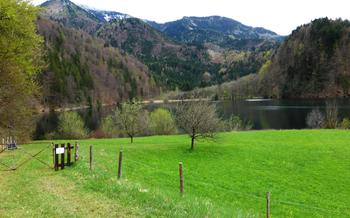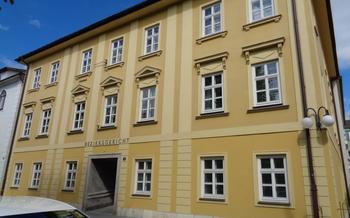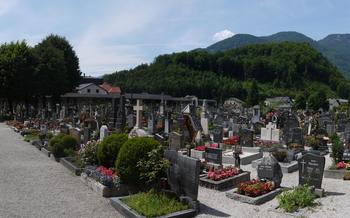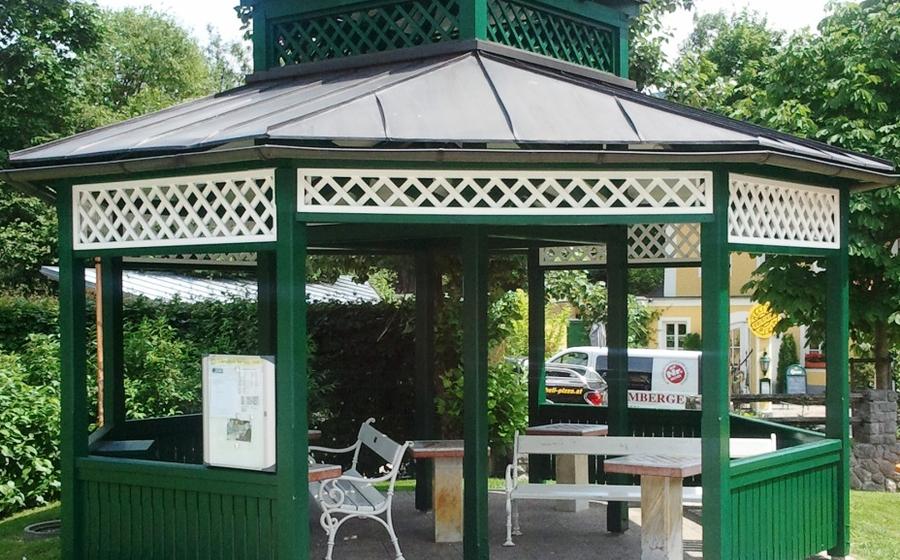
Hallstatt Ossuary
- The Hallstatt Ossuary: A Unique Historical Attraction
- Exploring the Past: A Journey Through Time
- A Place of Remembrance: Honoring the Departed
- Artistic Expressions: Exploring the Ossuary's Artwork
- Preservation and Restoration: Protecting a Legacy
- Guided Tours: Unraveling the Ossuary's Mysteries
- Respecting the Sacred: Etiquette and Guidelines
- The Village of Hallstatt: A Picturesque Gem
- UNESCO World Heritage Site: Recognition and Preservation
- Hallstatt Salt Mines: A Subterranean Adventure
- Lake Hallstatt: A Serene Alpine Retreat
- Dachstein Glacier and Caves: Natural Wonders
- Culinary Delights: Savoring Local Cuisine
- Transportation and Accessibility: Getting to Hallstatt
- Insider Tip: Secret Spots and Hidden Gems
The Hallstatt Ossuary: A Unique Historical Attraction
The Hallstatt Ossuary is a captivating historical site that offers a glimpse into the past and the unique burial practices of the Hallstatt region. Its origins can be traced back to the 12th century, when it served as a final resting place for the local community. Over time, the ossuary became a repository for the bones of generations of Hallstatt residents, creating a fascinating collection that has captivated visitors for centuries.
The ossuary's cultural significance lies in its role as a testament to the region's rich history and traditions. It provides insights into the beliefs and customs of the Hallstatt people, shedding light on their attitudes towards death and the afterlife. The ossuary's architectural style is simple yet striking, featuring a vaulted ceiling and rows of niches that house the skulls and bones of the departed. Its location, nestled amidst the picturesque village of Hallstatt and surrounded by the stunning Alpine scenery, adds to its allure.
The Hallstatt Ossuary is easily accessible, located just a short walk from the center of the village. Visitors can explore its unique collection and delve into the history of Hallstatt at their own pace. Whether you're a history buff, a culture enthusiast, or simply seeking an awe-inspiring experience, the Hallstatt Ossuary is a must-visit destination that promises an unforgettable journey through time.
Exploring the Past: A Journey Through Time
The Hallstatt Ossuary is a testament to the rich history of the region. Its origins can be traced back to the 12th century when it served as a burial ground for the local parish. Over the centuries, the ossuary became a repository for the bones of thousands of individuals, creating a unique collection of skeletal remains.
Among the most notable historical figures associated with the ossuary is Johann Georg Ramsauer, a local priest who meticulously arranged and cataloged the bones in the 18th century. His work transformed the ossuary into a place of remembrance and reflection, where visitors could contemplate the transience of life.
The evolution of burial practices in Hallstatt is evident within the ossuary. Initially, the bones were simply piled up in the charnel house. However, as the ossuary became more crowded, the bones were arranged in a more orderly fashion, with skulls placed on shelves and long bones stacked in rows. This arrangement not only saved space but also created a more solemn and respectful atmosphere.
Archaeological discoveries made at the ossuary have shed light on the lives and health of the people of Hallstatt. Examination of the bones has revealed evidence of diseases such as tuberculosis, arthritis, and malnutrition, providing valuable insights into the health challenges faced by past generations.
A Place of Remembrance: Honoring the Departed
The Hallstatt Ossuary is not merely a historical site but also a place of remembrance and reflection, where the lives and memories of the deceased are honored. The skulls and bones arranged within the ossuary serve as a poignant reminder of the transience of life and the enduring presence of death. Each skull is unique, bearing the traces of the individual's life experiences and stories.
Legends and stories abound, adding to the mystical aura of the ossuary. One tale speaks of a young woman who was buried alive and awoke in her coffin, her screams echoing through the ossuary. Another legend tells of a skull that weeps tears of blood, a symbol of the suffering and sorrow experienced by those who have passed away.
The ossuary is not just a repository for bones but also a place where families and friends can come to pay their respects and remember their loved ones. Memorialization rituals and ceremonies are held here, honoring the lives of those who have departed and providing a sense of closure and comfort to the bereaved.
Artistic Expressions: Exploring the Ossuary's Artwork
The Hallstatt Ossuary is not only a place of remembrance but also a treasure trove of artistic expressions. The walls and ceilings of the ossuary are adorned with a remarkable collection of murals, paintings, carvings, and sculptures that reflect the rich artistic traditions of the region.
Murals and Paintings:
The most striking feature of the ossuary's interior is the series of murals that depict religious scenes and biblical stories. These murals, created by local artists in the 18th and 19th centuries, showcase a vibrant palette of colors and intricate details. They offer a glimpse into the beliefs and values of the community at the time.
Symbolic Carvings and Sculptures:
In addition to the murals, the ossuary is home to a collection of symbolic carvings and sculptures. These carvings, often depicting skulls, bones, and other symbols of mortality, serve as a reminder of the transience of life. They invite visitors to reflect on the inevitability of death and the importance of living life to the fullest.
Historical Inscriptions and Epitaphs:
The ossuary also features a number of historical inscriptions and epitaphs. These inscriptions, often etched on the skulls and bones, provide valuable insights into the lives and deaths of the individuals interred within the ossuary. They offer a glimpse into the personal stories and tragedies that shaped the history of Hallstatt.
Artistic Styles and Influences:
The artistic expressions found in the Hallstatt Ossuary reflect a blend of different styles and influences. From the Baroque and Rococo styles of the murals to the Gothic and Renaissance influences in the carvings and sculptures, the ossuary showcases a rich tapestry of artistic traditions. This diversity adds to the overall charm and significance of the site.
Preservation and Restoration: Protecting a Legacy
The Hallstatt Ossuary has undergone extensive preservation and restoration efforts to ensure its longevity and protect its unique historical and cultural significance. Conservationists face the challenge of preserving the fragile remains and artifacts while maintaining the ossuary's authenticity. Specialized techniques are employed to clean and restore the skulls and bones, including gentle brushing, chemical treatments, and careful reassembly.
Historical research and documentation play a crucial role in understanding the ossuary's past and guiding conservation efforts. Archaeologists and historians meticulously study the site, uncovering new insights into burial practices and the lives of those interred within the ossuary. This knowledge informs restoration decisions and helps preserve the ossuary's integrity.
Collaborative efforts among various stakeholders, including cultural heritage organizations, government agencies, and local communities, are essential for safeguarding the ossuary. These collaborations facilitate the sharing of expertise, resources, and funding, ensuring the long-term preservation of this unique and valuable historical site.
Guided Tours: Unraveling the Ossuary's Mysteries
To fully appreciate the significance and stories behind the Hallstatt Ossuary, guided tours are highly recommended. Knowledgeable guides provide a wealth of insights into the ossuary's history, symbolism, and cultural importance. Tours are available in multiple languages, ensuring that visitors from all over the world can understand and engage with the site's narratives.
During the tour, guides lead visitors through the ossuary's chambers, explaining the significance of the skulls and bones, the symbolism of the artwork, and the evolution of burial practices in Hallstatt. They share intriguing stories and legends associated with the ossuary, shedding light on the lives and beliefs of the people who once called this region home.
Booking a guided tour is easy and can be done through the local tourist office or online. Tours typically last around 30 minutes to an hour and offer a comprehensive overview of the ossuary's history and significance. The cost of a guided tour is minimal, and it's well worth the investment for a deeper understanding of this unique and fascinating site.
Respecting the Sacred: Etiquette and Guidelines
The Hallstatt Ossuary is a sacred and deeply respected site, and visitors are expected to conduct themselves in a manner that is appropriate and respectful. Here are some essential guidelines to follow when visiting the ossuary:
-
Dress Code and Attire: Dress modestly and respectfully. Avoid wearing shorts, tank tops, or revealing clothing. Opt for comfortable and conservative attire that is suitable for a place of remembrance.
-
Noise Level and Respectful Atmosphere: Maintain a low noise level and avoid loud conversations or disruptive behavior. The ossuary is a place for quiet contemplation and reflection, and excessive noise can disturb other visitors.
-
Photography Policies and Restrictions: Photography is generally permitted within the ossuary, but flash photography is strictly prohibited. Be mindful of others when taking photos and avoid capturing images of individuals without their consent.
-
Respect for Religious and Cultural Significance: Remember that the ossuary is a place of religious significance for many people. Be respectful of the beliefs and customs associated with the site, and avoid any actions or comments that may be considered offensive or disrespectful.
The Village of Hallstatt: A Picturesque Gem
Nestled amidst the stunning Alpine scenery, the village of Hallstatt exudes a captivating charm that draws visitors from around the world. Beyond the ossuary's allure, Hallstatt boasts an array of attractions and experiences that make it a must-visit destination.
Historical Landmarks and Cultural Experiences: - Embark on a journey through time as you explore Hallstatt's historical landmarks, including the 16th-century Evangelical Church with its intricate frescoes and the iconic Hallstatt Charnel House. - Delve into the region's rich heritage at the Hallstatt Museum, showcasing archaeological treasures, traditional costumes, and insights into the village's past.
Natural Beauty and Outdoor Adventures: - Discover the breathtaking natural wonders that surround Hallstatt. Hike along scenic trails, marvel at the cascading waterfalls, and immerse yourself in the tranquil ambiance of Lake Hallstatt. - For a unique perspective, embark on a boat tour across the crystal-clear waters, offering panoramic vistas of the village and the surrounding mountains.
Accommodation and Dining Options: - Hallstatt offers a range of accommodation options, from cozy guesthouses to charming hotels, providing a perfect base for exploring the region. - Indulge in the culinary delights of Hallstatt's restaurants, serving traditional Austrian dishes with a modern twist, using fresh local ingredients. Sample regional specialties such as "Knödel" (dumplings) and "Forelle" (trout), accompanied by a glass of Austrian wine.
UNESCO World Heritage Site: Recognition and Preservation
The Hallstatt Ossuary and the surrounding village of Hallstatt have been recognized for their exceptional cultural and natural value by being designated as a UNESCO World Heritage Site. This prestigious designation highlights the site's global significance and the importance of preserving its unique heritage for future generations.
To be inscribed on the World Heritage List, a site must meet one or more of ten selection criteria established by UNESCO. Hallstatt fulfills several of these criteria, including:
-
Cultural Significance: Hallstatt is a well-preserved example of a pre-industrial Alpine village that has maintained its traditional way of life and architecture.
-
Historical Importance: The ossuary and its collection of skulls and bones provide a unique insight into the burial practices and beliefs of the ancient Hallstatt culture.
-
Architectural Heritage: The ossuary's unique architectural style, with its intricate murals and carvings, is a testament to the artistic and cultural achievements of the region.
-
Natural Beauty: The village of Hallstatt is situated in a stunning natural setting, surrounded by the majestic Dachstein Mountains and the serene Lake Hallstatt.
UNESCO's designation of Hallstatt as a World Heritage Site not only recognizes its outstanding universal value but also places a responsibility on the local authorities and community to protect and preserve this unique cultural and natural heritage for the benefit of future generations.
Hallstatt Salt Mines: A Subterranean Adventure
Descend into the depths of the Hallstatt Salt Mines, a captivating subterranean realm that has been shaped by centuries of mining activity. Delve into the history of salt production, a cornerstone of Hallstatt's economy and cultural heritage. Guided tours lead you through the labyrinthine tunnels, revealing the secrets of the underground world. Marvel at the glistening salt crystals that adorn the walls, creating a mesmerizing spectacle. Discover the tools and techniques used by miners throughout the ages, gaining insights into their arduous labor. Explore the natural wonders of the salt mines, including subterranean lakes, stalactites, and stalagmites. Brace yourself for a thrilling adventure that combines history, geology, and exploration.
Lake Hallstatt: A Serene Alpine Retreat
Nestled amidst the majestic peaks of the Dachstein mountains, Lake Hallstatt offers a tranquil escape from the hustle and bustle of everyday life. Its crystal-clear waters, surrounded by lush forests and charming villages, create a picturesque landscape that will leave you breathless. Whether you're seeking relaxation or adventure, Lake Hallstatt has something to offer everyone.
Take a leisurely stroll along the lakeside promenade, admiring the stunning views of the mountains reflected on the water's surface. Inhale the fresh alpine air and let the tranquility of the surroundings soothe your mind. For a more active experience, rent a kayak or stand-up paddleboard and explore the lake from a different perspective. The calm waters provide an ideal setting for paddling, allowing you to glide effortlessly across the surface and take in the beauty of the shoreline.
If you prefer to stay on land, there are several hiking trails that wind through the forests surrounding the lake. These trails offer a variety of difficulty levels, catering to both experienced hikers and those looking for a more leisurely walk. As you hike, keep an eye out for wildlife, as the area is home to a variety of birds, deer, and other animals.
For those seeking a truly unique experience, consider taking a boat tour of the lake. These tours provide a fascinating glimpse into the history and culture of the region, as well as stunning views of the surrounding mountains. During the tour, you'll learn about the local legends and traditions associated with Lake Hallstatt, and you'll have the opportunity to visit some of the hidden coves and inlets that are inaccessible by land.
Whether you're looking to relax, explore, or simply soak in the beauty of nature, Lake Hallstatt offers an unforgettable experience for visitors of all ages.
Dachstein Glacier and Caves: Natural Wonders
The Dachstein Glacier and Caves are a must-see for nature enthusiasts visiting Hallstatt. Located just a short drive from the village, this alpine wonderland offers breathtaking scenery, thrilling adventures, and a glimpse into the subterranean world.
The Dachstein Glacier is one of the largest glaciers in the Eastern Alps, covering an area of over 30 square kilometers. Visitors can take a cable car to the glacier's surface and explore its icy wonderland, complete with crevasses, ice caves, and stunning views of the surrounding mountains.
Beneath the glacier lies a vast network of caves, waiting to be explored. Guided tours are available for visitors of all levels, ranging from easy walks through illuminated caves to challenging expeditions for experienced cavers. The caves are home to a variety of geological formations, including stalactites, stalagmites, and underground lakes.
For those seeking an adrenaline rush, the Dachstein Glacier offers a variety of activities, including ice climbing, glacier trekking, and paragliding. There are also several hiking trails that wind through the surrounding mountains, offering panoramic views of the region.
Whether you're a nature lover, an adventure seeker, or simply looking for a breathtaking day trip, the Dachstein Glacier and Caves are sure to leave you in awe.
Culinary Delights: Savoring Local Cuisine
Hallstatt offers a culinary journey that will tantalize your taste buds with traditional Austrian dishes, local specialties, and regional ingredients. Indulge in hearty Tafelspitz, a boiled beef dish served with horseradish sauce, or savor the flavors of Wiener Schnitzel, a classic breaded and fried cutlet. For a taste of the region, try the Hallstätter Knödel, a dumpling filled with spinach and cheese, or the Steirerkrapfen, a type of ravioli filled with pumpkin or potatoes.
Don't miss the chance to sample local delicacies such as smoked trout from Lake Hallstatt, or the Hallstätter Brot, a traditional sourdough bread. For a sweet treat, try the Salzburger Nockerl, a fluffy soufflé-like dessert, or the Tiroler Kiachln, a type of fried pastry.
To fully immerse yourself in the local culinary scene, visit one of the many restaurants and dining experiences that Hallstatt has to offer. From traditional Gasthäuser (inns) to modern bistros, there are options to suit every taste and budget. Be sure to try one of the many cafés and Konditoreien (pastry shops), where you can indulge in freshly baked pastries and cakes.
Hallstatt also hosts several food festivals and culinary events throughout the year, where you can sample regional specialties and meet local producers. Don't miss the Hallstätter Wochenmarkt (weekly market), where you can find fresh produce, local cheeses, and handmade crafts.
Whether you're looking for a hearty meal, a light snack, or a sweet treat, Hallstatt has something to offer every foodie. So come hungry and prepare to be delighted by the culinary treasures of this charming village.
Transportation and Accessibility: Getting to Hallstatt
Hallstatt is a picturesque village nestled amidst the Austrian Alps, offering a unique blend of history, culture, and natural beauty. Getting to Hallstatt is relatively easy, with various transportation options available depending on your preferences and budget.
By Train: - Take the scenic train journey from Salzburg or Vienna to Hallstatt. - The train station is located a short walk from the village center. - Check train schedules and fares on the Austrian Federal Railways (ÖBB) website.
By Bus: - Regular bus services connect Hallstatt with nearby towns and cities. - Buses depart from Salzburg, Bad Ischl, and Obertraun. - Check bus schedules and fares on the Postbus website.
By Boat: - During the summer months, a ferry operates across Lake Hallstatt, connecting the village with the lakeside town of Obertraun. - Enjoy stunning views of the lake and the surrounding mountains. - Check ferry schedules and fares at the Hallstatt Tourist Information Center.
Driving to Hallstatt: - Hallstatt is accessible by car via the scenic Salzkammergut Alpine Road. - Parking is limited in the village, so consider using public transportation or parking in nearby Obertraun and taking the ferry. - Plan your route and check for road closures or traffic updates.
Accessibility for Visitors with Disabilities: - Hallstatt is generally accessible for visitors with disabilities. - The village center is mostly flat, with ramps and elevators available in public buildings. - Accessible parking spaces are available near the tourist information center. - Contact the tourist information center or your hotel for assistance if needed.
Tips for Planning Your Journey: - Plan your trip during the shoulder seasons (May-June or September-October) to avoid the crowds. - Book your accommodation and transportation in advance, especially during peak season. - Pack comfortable shoes as you'll be doing a lot of walking on cobblestone streets. - Bring a camera to capture the stunning scenery and unique attractions.
Insider Tip: Secret Spots and Hidden Gems
Beyond the well-known attractions, Hallstatt offers a treasure trove of secret spots and hidden gems waiting to be discovered. Explore the charming side streets and alleys to uncover unique boutiques, art galleries, and cozy cafes. Take a leisurely stroll along the picturesque lakeshore promenade and find secluded benches amidst the lush greenery, offering breathtaking views of the lake and the surrounding mountains. For a unique perspective, embark on a guided kayaking tour of Lake Hallstatt and paddle through the serene waters, surrounded by stunning natural scenery. Don't miss the opportunity to venture into the nearby forests and discover hidden hiking trails leading to secluded waterfalls and panoramic viewpoints. Embrace the spirit of adventure and uncover the hidden wonders that make Hallstatt a truly magical destination.
